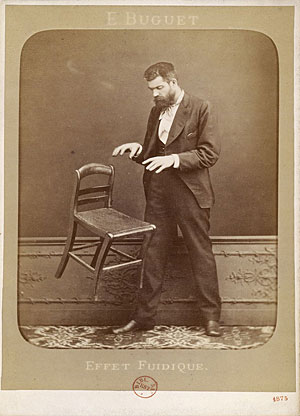Facts for Kids
Telekinesis is a purported psychic ability allowing an individual to influence a physical system without physical interaction.
Overview
History Of Telekinesis
Future Research Directions
Controversies And Skepticism
Cultural Depictions In Media
Applications And Implications
Famous Experiments And Studies
Notable Figures And Practitioners
Scientific Theories And Explanations
Telekinesis In Fiction And Literature
Psychological Perspectives On Telekinesis

Inside this Article
Imagination
Psychology
Attention
Universe
Machine
Concept
Dreams
Sparks
People
Energy
Mind
Did you know?
🧠✨ Telekinesis means moving objects just by thinking about them!
🌍📚 The term 'telekinesis' was first used in 1890 by a French psychologist named Émile Coué.
🔬💔 Scientists are curious about telekinesis, but haven't found proof that it exists.
🪄✨ Telekinesis became popular in magic shows, especially in the early 20th century.
🎬📚 Characters like Carrie from Stephen King's novel use telekinesis as a superpower.
🧑🔬🔍 Ruth Montgomery's 1930s experiment was one of the first tests of telekinesis.
🌟 Telekinesis is often shown in movies as a symbol of inner strength.
🔮 Uri Geller became famous for claiming he could bend spoons with his mind.
😕❓ Many people are skeptical about telekinesis, thinking it's more about magic tricks.
📖⚡ If it were real, telekinesis could change how we help people and lift heavy objects!
Introduction
History Of Telekinesis
Future Research Directions
Controversies And Skepticism
Cultural Depictions In Media
Applications And Implications
Famous Experiments And Studies
🔬🔍 She claimed to have the power to move objects with her mind. Researchers watched to see if she could really do it, but results were mixed and hard to understand. In 2002, a young girl named Michelle used a device called a “PK machine” to test if she had telekinesis. Scientists didn’t reach a clear conclusion. These experiments make us think — is it possible, or just interesting to watch?
Notable Figures And Practitioners
One is Uri Geller, who became famous in the 1970s for bending spoons and claiming he could move objects with his mind. Another is Nina Kulagina, a Russian woman who attracted attention during the Cold War by showing her supposed powers. 🌍✨ People admire these figures, but scientists remain skeptical. They often ask if the tricks are real or simply illusions. These claims challenge us to think critically about what we see and hear!
Scientific Theories And Explanations
Telekinesis In Fiction And Literature
Those stories inspire dreams of superhuman abilities. They remind us how powerful imagination can be and create thrilling stories where anything, including telekinesis, is possible!
Psychological Perspectives On Telekinesis
Understanding how our brains trick us is super important in understanding why we like the idea of telekinesis!

